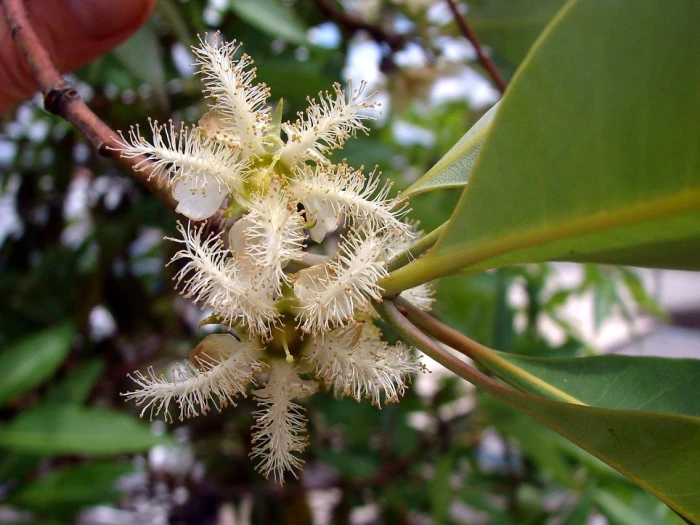Brisbane Box
(Lophostemon confertus)
Brisbane Box (Lophostemon confertus)
/
/

tatters:)
CC BY 2.0
Image By:
tatters:)
Recorded By:
Copyright:
CC BY 2.0
Copyright Notice:
Photo by: tatters:) | License Type: CC BY 2.0 | License URL: https://creativecommons.org/licenses/by/2.0 | Uploader: Berichard | Publisher: Wikimedia Commons | Title: Brush_Box_tree_flowers.jpg | Notes: {{Information |Description={{es|1=Rara especie de Lunaria annua de color blanco, también se conoce como Flor de la Plata o Moneda del Papa.}} |Source=Trabajo propio |Author=korbinian |Date=2010-09-29 |Permission= |other_versions= }} [[Purranque]] |


















































Estimated Native Range
Climate Requirements for Helena, Montana
| This Plant | Your Site | Plant Suitability for Your Location | ||
|---|---|---|---|---|
| • Precipitation | 56" - 67" | 11" | Your precipitation may be insufficient for this plant. Irrigate N" / year. | Irrigate N" / year |
| • High Temp. | 78°F - 85°F | 83°F | Your summer temperatures are normal for this plant. | Excellent |
| • Low Temp. | 41°F - 50°F | 11°F | Your winter temperatures are normal for this plant | Excellent |
This plant should grow well at your location with about N inches per year (Y minutes per month) of irrigation.
Summary
Lophostemon confertus, commonly known as Brisbane Box, is an evergreen tree native to the coastal rainforests and wet sclerophyll forests of Eastern Australia. It typically reaches heights of up to 40 meters, with a dome-like canopy that provides dense shade, thanks to its dark green, leathery leaves. Unlike eucalyptus trees, Brisbane Box is less prone to limb drop, making it a safer choice for urban environments. The tree’s bark is attractive, peeling in patches to reveal a mottled pattern of grey, green, and cream.
Brisbane Box is valued for its resilience to urban stressors, including smog, drought, and poor drainage. Its adaptability and moderate maintenance requirements make it a popular choice for street trees, urban landscaping, and as a shade tree in parks. It can tolerate pruning well, which is beneficial for managing its size around overhead power lines. While it thrives in full sun, it can also tolerate part shade and is best grown in well-drained soils. It is important to note that Lophostemon confertus can become invasive outside its native range, particularly in parts of the United States, so gardeners should consult local regulations before planting.CC BY-SA 4.0
Brisbane Box is valued for its resilience to urban stressors, including smog, drought, and poor drainage. Its adaptability and moderate maintenance requirements make it a popular choice for street trees, urban landscaping, and as a shade tree in parks. It can tolerate pruning well, which is beneficial for managing its size around overhead power lines. While it thrives in full sun, it can also tolerate part shade and is best grown in well-drained soils. It is important to note that Lophostemon confertus can become invasive outside its native range, particularly in parts of the United States, so gardeners should consult local regulations before planting.CC BY-SA 4.0
Plant Description
- Plant Type: Tree
- Height: 30-40 feet
- Width: 15-25 feet
- Growth Rate: Rapid
- Flower Color: N/A
- Flowering Season: Spring, Summer
- Leaf Retention: Evergreen
Growth Requirements
- Sun: Full Sun
- Water: Medium
- Drainage: Medium, Fast
Common Uses
Drought Tolerant, Hedges, Low Maintenance, Street Planting
Natural Habitat
Coastal rainforests and wet sclerophyll forests of Eastern Australia
Other Names
Common Names: Brisbane Boxtree, Queensland Box, Vinegar Tree, Vinegartree, Brush Box, Pink Box
Scientific Names: Lophostemon confertus, Tristania conferta, Lophostemon arborescens, Tristania macrophylla, Tristania conferta var. fibrosa, Tristania depressa, Tristania griffithii, Melaleuca conferta, Tristania conferta var. microcarpa
GBIF Accepted Name: Lophostemon confertus (R.Br.) Paul G.Wilson & J.T.Waterh.